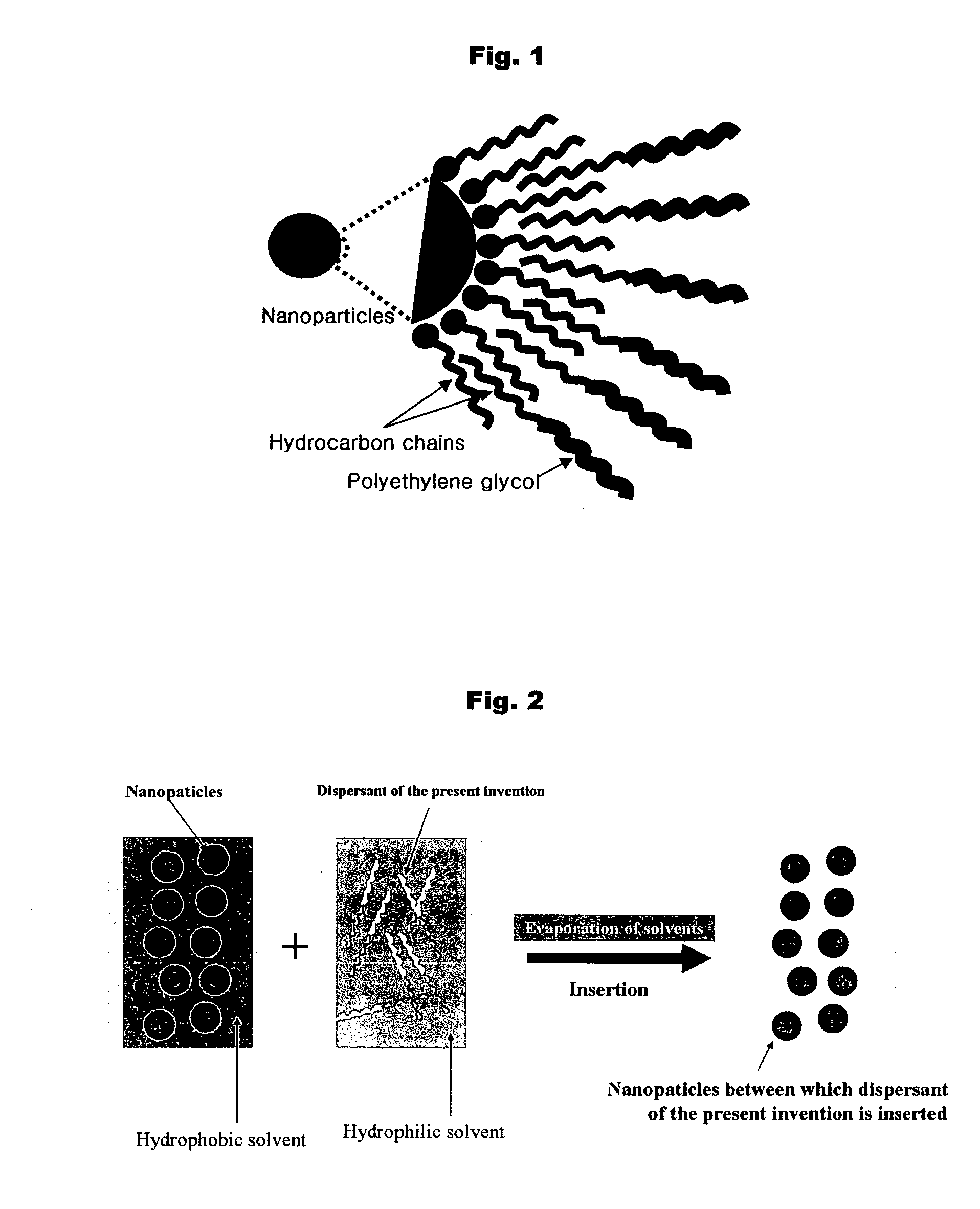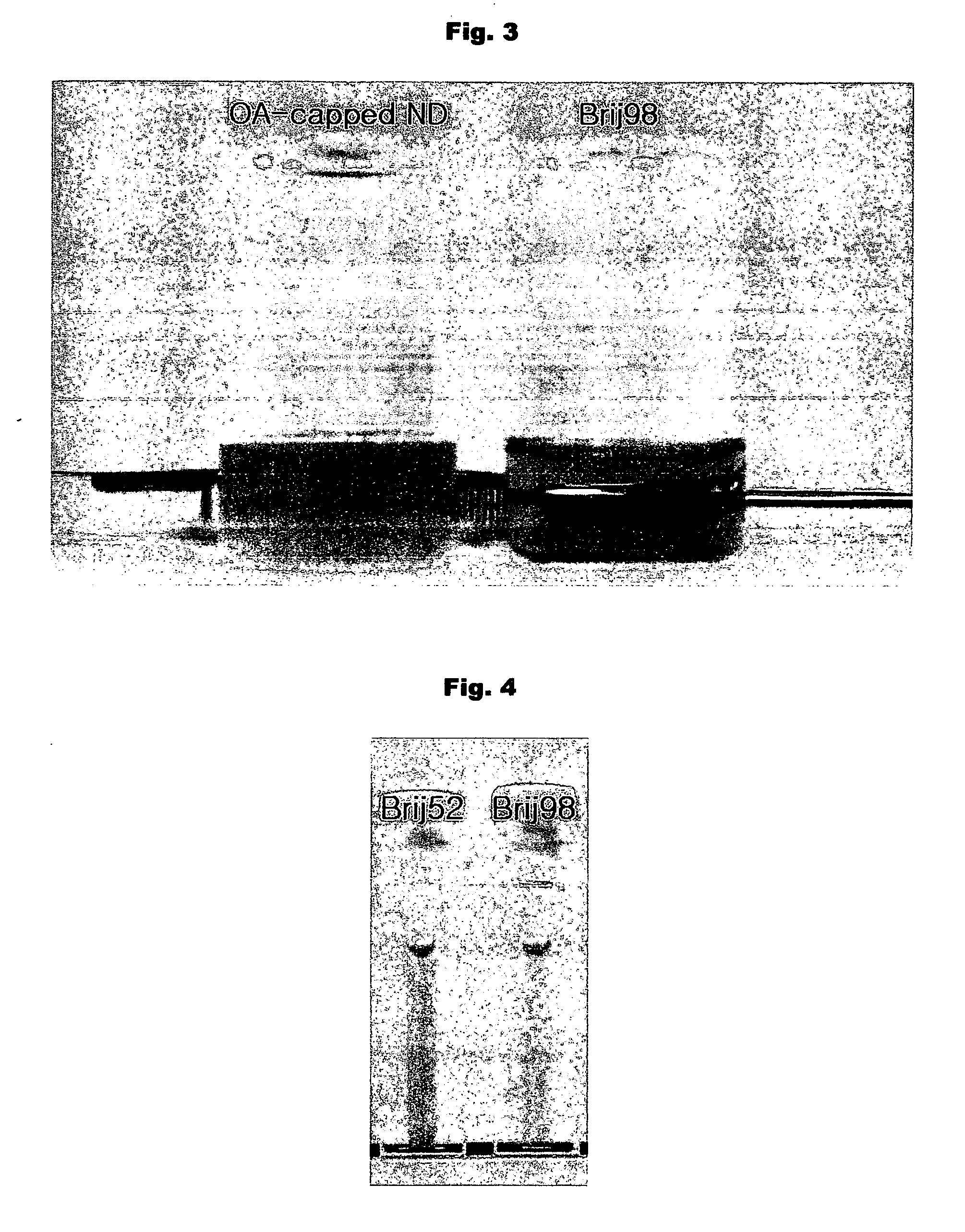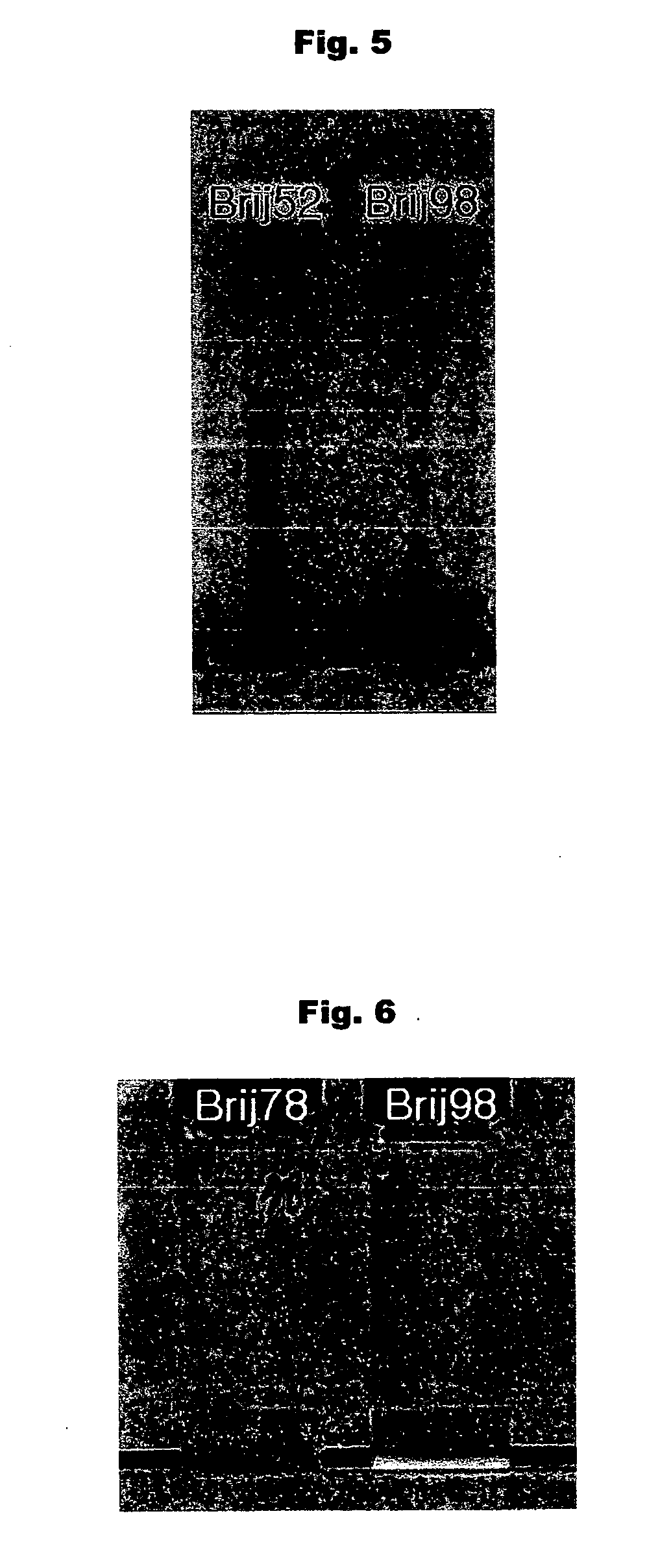Dispersant for dispersing nanoparticles in an epoxy resin, method for dispersing nanoparticles using the same, and nanoparticle-containing thin film comprising the same
a technology of epoxy resin and dispersant, which is applied in the field of dispersant for dispersing nanoparticles in epoxy resin, a method for dispersing nanoparticles using the dispersant, and a nanoparticle-containing thin film comprising the dispersant, can solve the problems of many drawbacks and limitations of substitution processes, insufficient exhibitivity of inherent characteristics, and poor efficiency
- Summary
- Abstract
- Description
- Claims
- Application Information
AI Technical Summary
Benefits of technology
Problems solved by technology
Method used
Image
Examples
example 1
[0079] 20 milliters (mL) of trioctylamine (TOA), 1.6 millimiles (mmol) of cadmium oxide (CdO) and 6.4 mmol of oleic acid (OA) were reacted under nitrogen. As the reaction temperature increased, the red cadmium oxide present in the reaction solution turned pale. The reaction solution was maintained at a temperature of 300° C. for 30 minutes or more until it became transparent. At this time, 1 mL of a 0.2 mole per liter (M) Se-trioctylphosphine (Se-TOP) complex solution was added to the reaction solution, and the mixture was allowed to react at 300° C. for 90 seconds. The reaction mixture turned orange, red, dark red and the like, sequentially, with the passage of time. Thereafter, a 0.2M S-trioctylphosphine (S-TOP) complex solution was added dropwise at a rate of about 1 mL per minute to the reaction mixture. Ethanol as a non-solvent was added to the mixture, followed by centrifugation, giving oleic acid-capped CsSe / CdS nanoparticles as precipitates, which emitted light at 604 nm.
[0...
examples 2 to 6
[0083] Dispersed CdSe / CdS nanoparticles were prepared in the same manner as in Example 1, except that each of the compounds shown in Table 1 as the dispersants of the present invention was used.
TABLE 1Example No.DispersantTrade MarkManufacturer2C18H37(OCH2CH2)20OHBrij78Aldrich3Tergitol NP-9Chemicals4TX-1005C16H33(OCH2CH2)2OHBrij526Brij56
experimental example 1
Determination of Insertion of Dispersant and Measurement of Degree of Dispersion of the Nanoparticles
[0087] To determine whether or not the dispersant of the present invention was inserted between the nanoparticles, samples from Example 1 and Comparative Example 1 were independently dispersed in ethanol. The degree of dispersion of the nanoparticles was visually observed. Specifically, the degree of dispersion was evaluated by placing an object behind the solutions and observing whether or not the object was seen through the solution.
[0088] The observation results are shown in FIG. 3, which is a photograph illustrating the degree of dispersion of the nanoparticles prepared in Example 1 in ethanol and that of the nanoparticles prepared in Comparative Example 1 in ethanol. The photograph shows that the solution of Example 1 is transparent enough to reveal the object through the solution, whereas the solution of Comparative Example 1 is opaque and the object is not visible through th...
PUM
| Property | Measurement | Unit |
|---|---|---|
| size | aaaaa | aaaaa |
| temperature | aaaaa | aaaaa |
| thickness | aaaaa | aaaaa |
Abstract
Description
Claims
Application Information
 Login to View More
Login to View More - R&D
- Intellectual Property
- Life Sciences
- Materials
- Tech Scout
- Unparalleled Data Quality
- Higher Quality Content
- 60% Fewer Hallucinations
Browse by: Latest US Patents, China's latest patents, Technical Efficacy Thesaurus, Application Domain, Technology Topic, Popular Technical Reports.
© 2025 PatSnap. All rights reserved.Legal|Privacy policy|Modern Slavery Act Transparency Statement|Sitemap|About US| Contact US: help@patsnap.com



